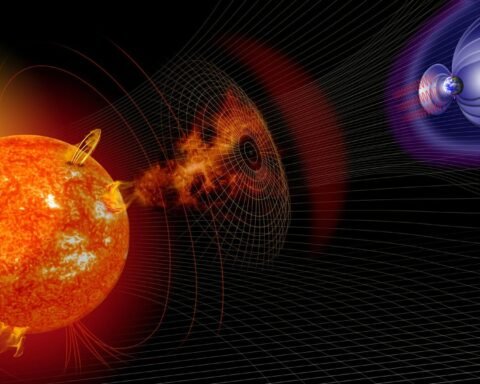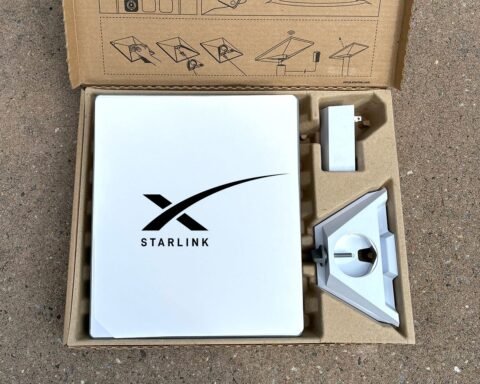Falcon 9 Rocket: Revolutionizing Space Exploration
Introduction
The Falcon 9 rocket has emerged as a game-changer in the realm of space exploration. Developed by SpaceX, this innovative rocket design has revolutionized the way we think about space travel. In this article, we will delve into the intricacies of the Falcon 9 rocket, exploring its features, capabilities, and the impact it has had on the space industry.
1. The Birth of the Falcon 9
The Falcon 9 rocket was conceptualized and developed by SpaceX, founded by Elon Musk in 2002. With a vision to revolutionize space technology and enable human colonization of Mars, Musk aimed to build a cost-effective and reusable rocket.
2. Design and Specifications
The Falcon 9 features a two-stage design, consisting of a reusable first stage and an expendable second stage. The first stage, powered by nine Merlin engines, provides the initial thrust to lift the rocket off the ground. The second stage, equipped with a single Merlin Vacuum engine, carries the payload to its intended orbit.
3. Reusability: The Key Advancement
One of the most significant breakthroughs of the Falcon 9 is its reusability. By successfully landing and refurbishing the first stage after launch, SpaceX has drastically reduced the cost of space missions. This achievement has opened doors for more frequent and affordable launches.
4. Performance and Payload Capacity
The Falcon 9 boasts impressive performance metrics. It can deliver payloads of up to 22,800 kilograms (50,265 pounds) to Low Earth Orbit (LEO) and 8,300 kilograms (18,300 pounds) to Geostationary Transfer Orbit (GTO). This exceptional payload capacity has attracted numerous satellite operators and government agencies to utilize the Falcon 9 for their missions.
5. Revolutionizing Satellite Deployment
With its enhanced reusability, the Falcon 9 has revolutionized satellite deployment. SpaceX’s innovative deployment system, known as the Starlink program, aims to provide global broadband coverage using thousands of small satellites deployed by Falcon 9 rockets. This ambitious project has the potential to bridge the digital divide and connect remote areas of the world.
6. Crewed Missions: A New Era
The Falcon 9 has played a pivotal role in enabling crewed missions to the International Space Station (ISS). With the Crew Dragon spacecraft atop the Falcon 9, NASA astronauts have been transported to and from the ISS, marking a new era of commercial crewed spaceflight. This achievement signifies the shift towards a more sustainable and collaborative space industry.
7. SpaceX’s Starship: A Future Companion
While the Falcon 9 continues to dominate the space industry, SpaceX has set its sights on the Starship, a fully reusable super-heavy lift launch vehicle. Designed for long-duration space travel and colonization of other planets, the Starship will complement the Falcon 9 by expanding the boundaries of human space exploration.
8. Challenges and Milestones
Developing the Falcon 9 and advancing its reusability posed numerous challenges for SpaceX. Over the years, the company has overcome setbacks and achieved remarkable milestones, such as the first successful landing of a rocket booster on a drone ship and the reuse of a previously flown Falcon 9 first stage.
9. Environmental Considerations
SpaceX’s pursuit of reusable rockets like the Falcon 9 aligns with their commitment to reducing the environmental impact of space travel. By minimizing the number of discarded rocket stages, the company aims to mitigate space debris and contribute to a sustainable approach to space exploration.
10. Applications beyond Earth’s Orbit
Beyond Earth’s orbit, the Falcon 9 has shown its potential for interplanetary missions. It has successfully delivered scientific payloads to destinations such as Mars, paving the way for future exploration and research endeavors. The Falcon 9’s reliability and adaptability make it a viable option for ambitious missions to other celestial bodies.
11. International Collaboration and Competition
The Falcon 9’s success has prompted collaboration with international partners and intensified competition within the space industry. Governments and private companies alike recognize the significance of SpaceX’s achievements, leading to increased cooperation and investment in space exploration and technology development.
12. The Future of the Falcon 9
As SpaceX continues to refine and enhance the Falcon 9, the future holds even more promising opportunities. With ongoing advancements in rocket technology, the Falcon 9 is poised to further reduce costs, increase payload capacity, and push the boundaries of space exploration.
Conclusion
The Falcon 9 rocket has revolutionized the space industry with its innovative design, reusability, and impressive performance metrics. It has enabled a new era of space exploration, from deploying satellites and conducting crewed missions to pushing the boundaries of human understanding. As SpaceX continues to push the limits of rocket technology, the Falcon 9 remains at the forefront of advancing humanity’s presence in space.
FAQs
1. Can the Falcon 9 carry humans? Yes, the Falcon 9 has successfully transported astronauts to the International Space Station as part of NASA’s Commercial Crew Program.
2. How many times can the Falcon 9 be reused? The Falcon 9 first stage is designed for multiple reuses. SpaceX has successfully flown and landed previously flown boosters multiple times.
3. What is the Starlink program? The Starlink program aims to provide global broadband coverage using a constellation of small satellites deployed by Falcon 9 rockets.
4. What is the payload capacity of the Falcon 9? The Falcon 9 can deliver up to 22,800 kilograms (50,265 pounds) to Low Earth Orbit and 8,300 kilograms (18,300 pounds) to Geostationary Transfer Orbit.
5. What is the significance of the Falcon 9’s reusability? The reusability of the Falcon 9 has dramatically reduced the cost of space missions, enabling more frequent launches and opening doors for new possibilities in space exploration.








